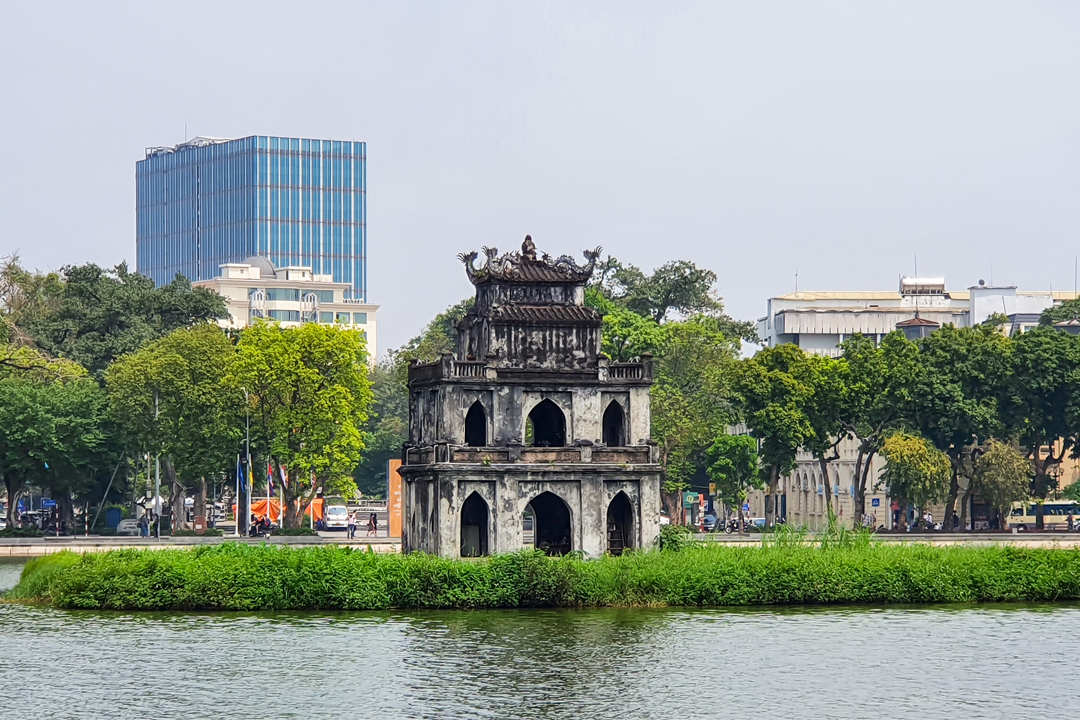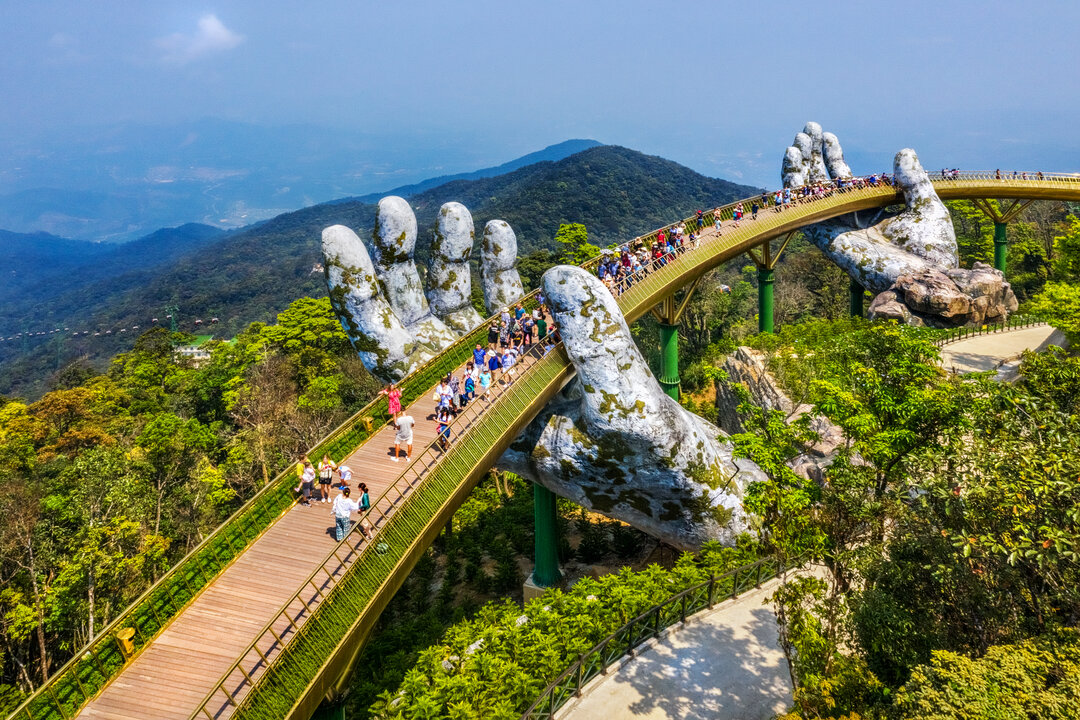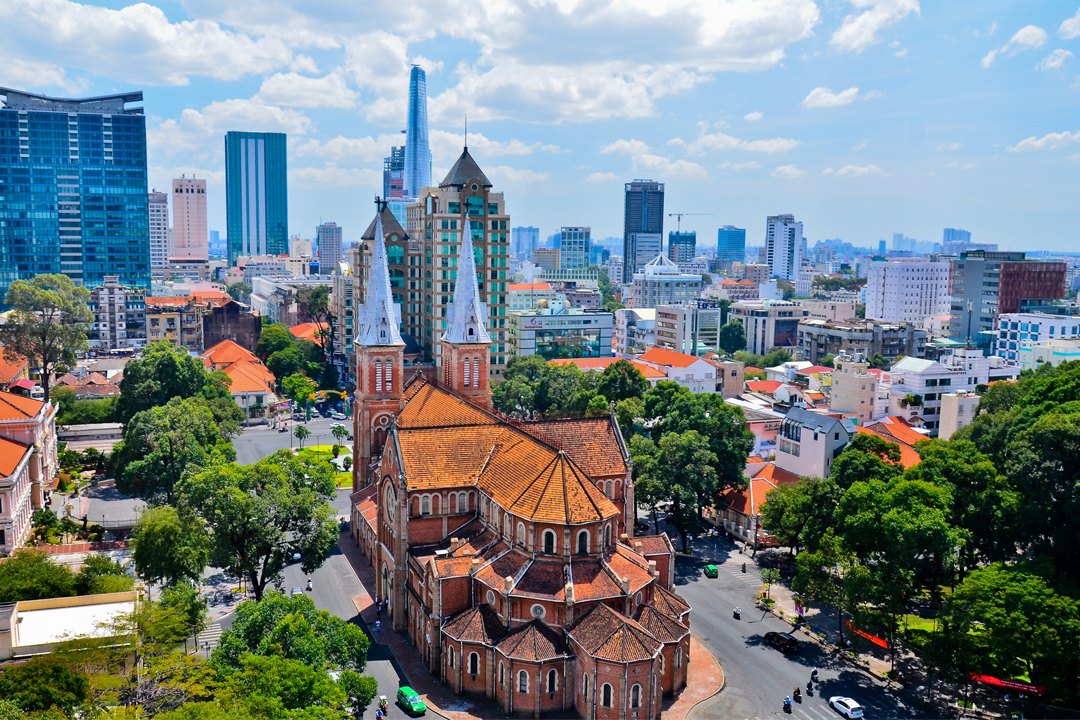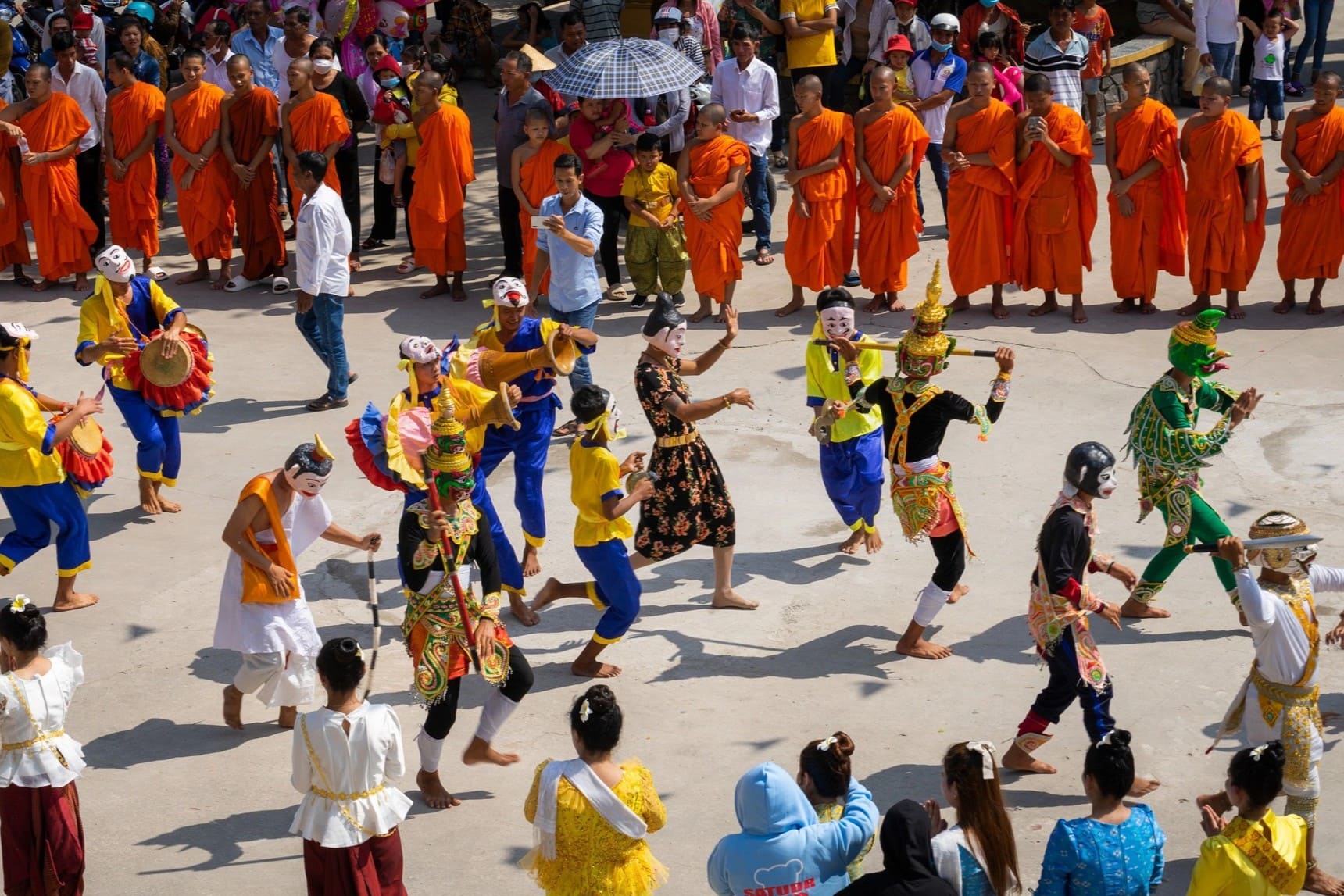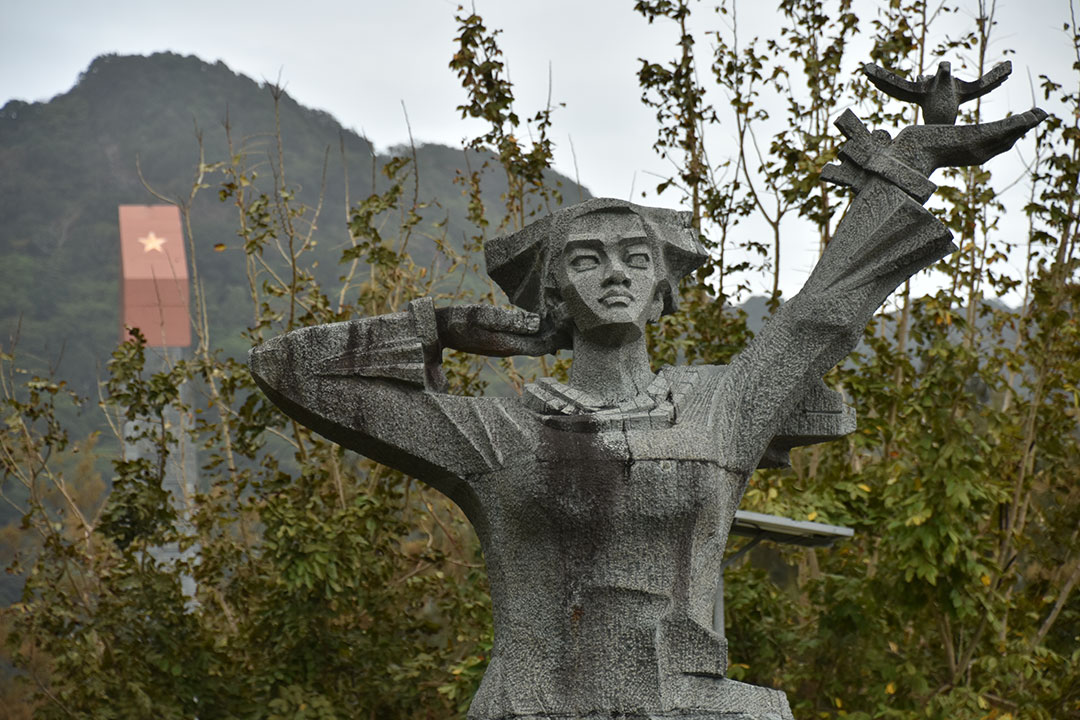Hang Duong Cemetery: History, Things To Do & Travel Guide
Hang Duong Cemetery, a solemn landmark, honors thousands of revolutionaries and prisoners who perished under colonial rule and during the Vietnam War. This cemetery stands as a powerful symbol of Vietnam’s resilience, honoring those who fought for independence. You come here to pay tribute and to reflect on the nation’s turbulent past and the enduring spirit of its people.
This article delves into the history and significance of Hang Duong Cemetery, highlighting the role it played in Vietnam’s struggle for freedom. We will explore the most famous graves, including the revered Vo Thi Sau, a young revolutionary whose legacy continues to inspire generations. If you are planning a visit, you will find valuable insights on the best time to visit, how to get there, and essential tips to ensure a respectful and meaningful experience.
For those looking to engage with the site beyond its historical context, we outline three key activities to do at Hang Duong Cemetery. This cemetery offers a deep insight into Vietnam’s past, honoring revolutionaries and war victims through meaningful rituals.
Many travelers ask about entrance fees, nighttime visits, and proper etiquette when honoring fallen heroes. This guide will provide answers to these frequently asked questions, ensuring that you have all the necessary information before your trip.
While in Con Dao, you can explore other historical landmarks such as the infamous Tiger Cage, where prisoners endured brutal conditions. Hang Duong Cemetery is more than just a burial ground, it is a powerful reminder of Vietnam’s fight for freedom. If you are a history enthusiast, a spiritual traveler, or someone seeking to pay respects, this site holds a profound experience waiting to be uncovered.
History and significance of Hang Duong Cemetery
Hang Duong Cemetery is the final resting place of thousands of Vietnamese revolutionaries and patriots. They sacrificed their lives in the brutal prisons of French colonial rule and the South Vietnamese government from 1862 to 1975. As one of the most sacred sites in Con Dao, it holds immense historical significance in Vietnam’s struggle for independence and freedom.
During the colonial and imperialist occupation, Con Dao was infamously known as the "Hell on Earth". Where political prisoners and freedom fighters were subjected to the harshest forms of torture. Many never left, making Hang Duong Cemetery a tragic yet heroic landmark in the nation's history.
This cemetery is not a burial ground but a symbol of gratitude toward those who gave their youth and lives to protect the ideals of national independence. Each grave tells a story a memory of resilience and sacrifice in the face of inhumane oppression.
The cemetery is divided into four main sections:
- Section A: Contains 688 graves, including those of Le Hong Phong, former General Secretary of the Indochinese Communist Party, and Nguyen An Ninh, an influential nationalist intellectual who played a key role in the anti-colonial movement.
- Section B: Contains 695 graves, the most famous of which belongs to Vo Thi Sau, a national heroine who became a symbol of youthful defiance against oppression. Her grave is the most frequently visited, particularly at night, when people gather to light incense and offer prayers.
- Section C: Holds 373 graves, including that of Le Van Viet, a revolutionary hero.
- Section D: Consists of 157 graves, mainly of freedom fighters whose remains were relocated from other cemeteries like Hon Cau and Hang Keo.
Today, Hang Duong Cemetery serves as a historical monument and as a spiritual sanctuary. The solemn atmosphere is especially moving at night when hundreds of candles and incense sticks are lit in tribute to the fallen.
Visitors and locals often bring offerings such as fresh flowers, fruit, mirrors, and combs simple yet meaningful gestures of respect for those who suffered and perished. Vo Thi Sau’s grave, in particular, is always adorned with offerings, a testament to the deep reverence she continues to inspire.
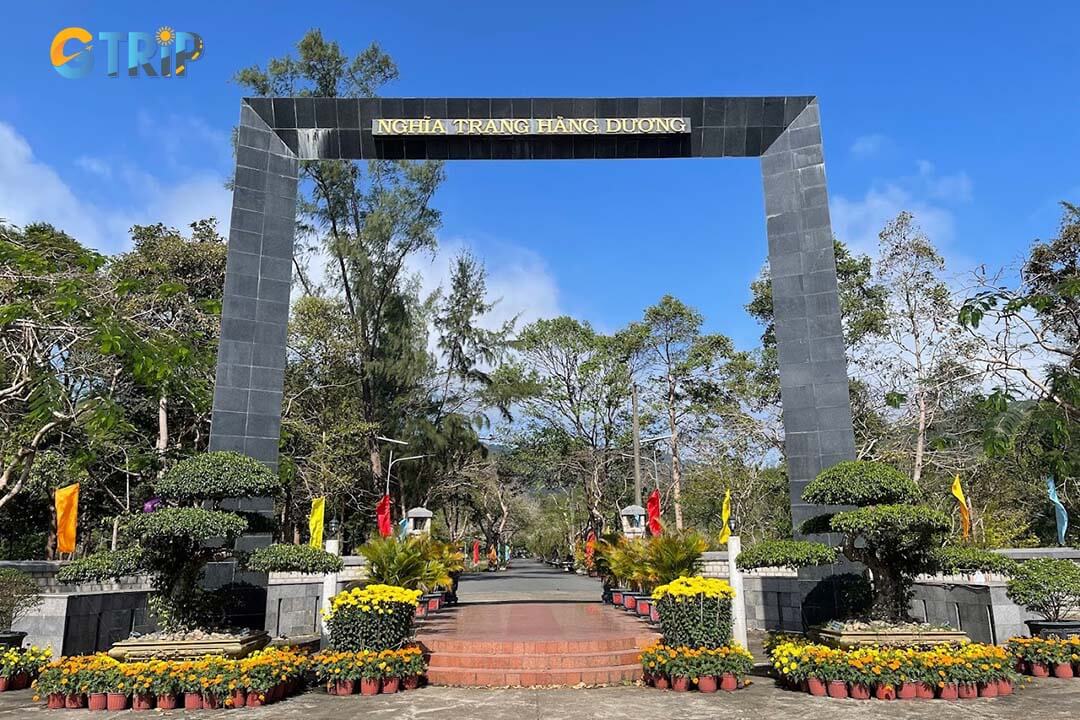
Hang Duong Cemetery honors Vietnamese revolutionaries who perished in Con Dao’s brutal prisons, symbolizing resilience and sacrifice
Top 3 meaningful activities at Hang Duong Cemetery
Hang Duong Cemetery is a solemn and historic site, serving as the final resting place of many Vietnamese revolutionaries and war heroes. Visitors come here to pay their respects, reflect on history, and honor the sacrifices of those who fought for the nation's independence.
1. Pay respects through incense offering
Paying tribute to the fallen heroes by lighting incense at their graves is a deeply meaningful act of remembrance. This simple yet powerful gesture symbolizes gratitude and respect, allowing visitors to honor the immense sacrifices made for the nation’s independence. Many come to visit the graves of national heroine Vo Thi Sau, Revolutionary Leader Le Hong Phong, and other brave martyrs who dedicated their lives to Vietnam’s freedom. It is a moment to reflect on history and connect with these courageous individuals.
Many visitors observe traditional customs by bringing fresh flowers, bowing in silence, and making heartfelt prayers. This solemn ritual fosters a deep sense of reverence, creating an atmosphere of collective remembrance and appreciation for those who rest in Hang Duong Cemetery.
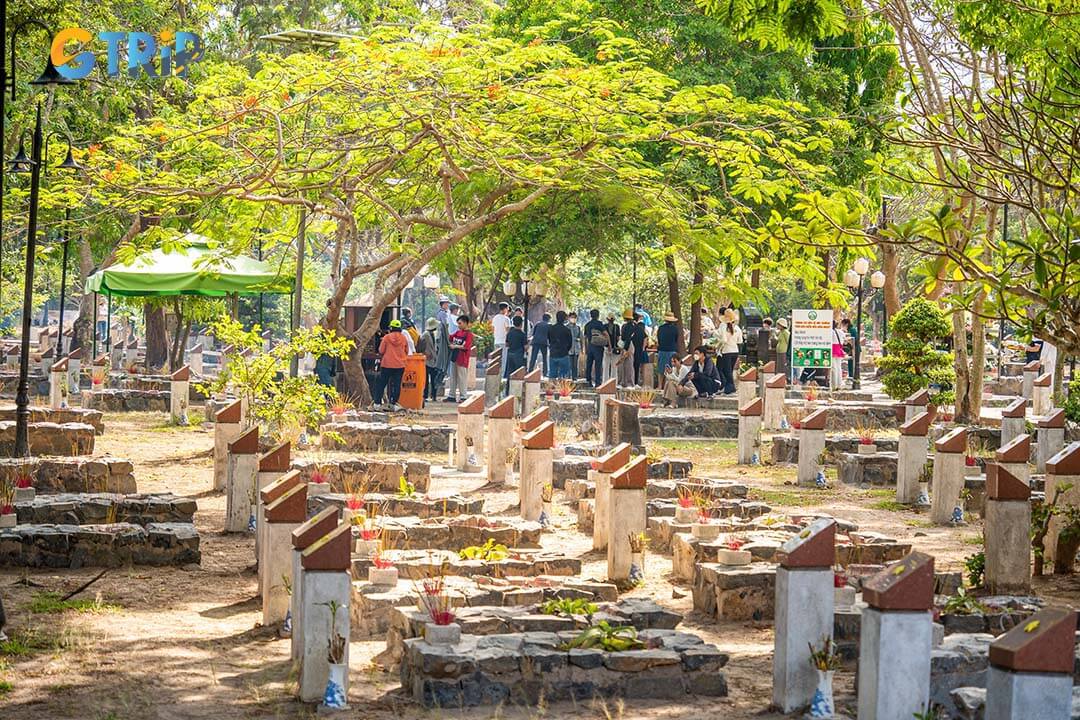
Lighting incense at the graves of fallen heroes is a solemn act of remembrance, honoring their sacrifices for Vietnam’s independence
2. Attend the commemorative ceremony for Heroine Vo Thi Sau
Vo Thi Sau’s memorial ceremony at Con Dao honors her sacrifice for the nation’s independence and freedom. Held annually on the 27th day of the 12th lunar month, the ceremony attracts many locals and visitors from all over the country.
During this time, people visit her grave at Hang Duong Cemetery, lighting incense and offering fresh flowers as a sign of deep respect. Cultural and artistic events honor her legacy, inspiring patriotism and resilience in future generations.
Attending the memorial ceremony for Vo Thi Sau is a way to pay tribute to the fallen. It encourages individuals to uphold heroic traditions and national values. The ceremony also fosters a deep sense of gratitude and remembrance, inspiring future generations to honor the sacrifices made for the nation's independence.
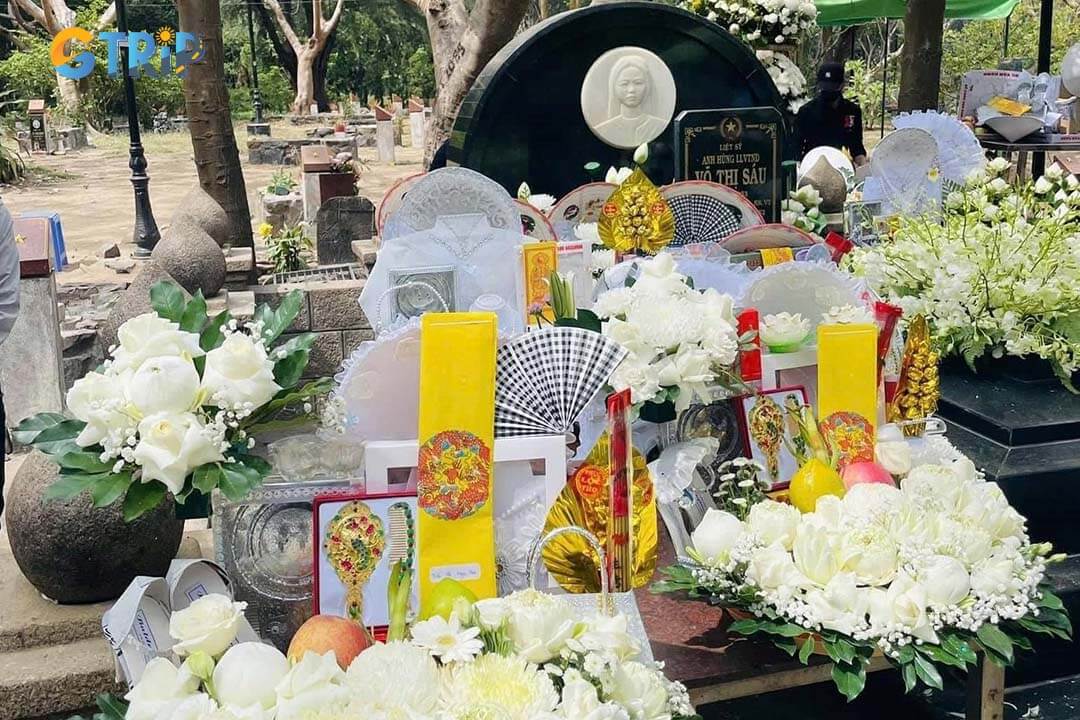
Vo Thi Sau’s memorial ceremony at Con Dao is a solemn tribute to her bravery, inspiring patriotism and honoring her sacrifice for Vietnam’s independence
3. Explore the surroundings and admire the statues
Walking through Hang Duong Cemetery, you will see many statues and monuments that honor those who gave their lives for Vietnam’s independence. These memorials are not just works of art they tell real stories of sacrifice, resilience, and hope. The Statue of Hope stands tall, symbolizing the unbreakable spirit of those who endured the harshest conditions. Nearby, the Indomitable Relief captures the suffering and determination of prisoners who refused to surrender. The Memorial Monument for National Heroes and Martyrs serves as a solemn reminder of the many lives lost in the struggle for freedom.
These statues add to the solemn yet peaceful atmosphere of the cemetery. As you walk along the quiet paths, you can take a moment to reflect on the history and the people behind these memorials. Each statue, each name on a gravestone, represents a life dedicated to a cause greater than themselves. Visiting these sites is not just about looking it's about remembering and understanding the sacrifices that shaped Vietnam’s history.
When is the best time to visit Hang Duong Cemetery in the day?
The best time to visit Con Dao and Hang Duong Cemetery is from November to April, when the weather is at its most favorable. During these months, the climate is mild, not too hot, and there is little to no rain. The sea is also calmer, making travel to the island more convenient and comfortable. This period allows visitors to explore the cemetery and other historical sites without worrying about sudden weather changes.
For those interested in experiencing meaningful commemorative events, Vo Thi Sau’s memorial ceremony (held on the 27th day of the 12th lunar month) and Vietnamese War Invalids and Martyrs Day (July 27) are two significant occasions. These events attract many visitors, locals, and even officials who come to pay their respects. The cemetery becomes much busier during these times, with ceremonies, incense offerings, and a deeply emotional atmosphere. If you wish to witness these solemn events, be prepared for crowds and plan your visit accordingly.
If you prefer a quieter and more reflective experience, visiting during regular days, particularly in the early morning or late evening, is recommended. These times provide a peaceful atmosphere for contemplation and remembrance. Additionally, always check the weather forecast before your trip, as sudden rain or rough seas may affect your travel plans. Proper planning will ensure a more comfortable and meaningful visit to this historically significant site.
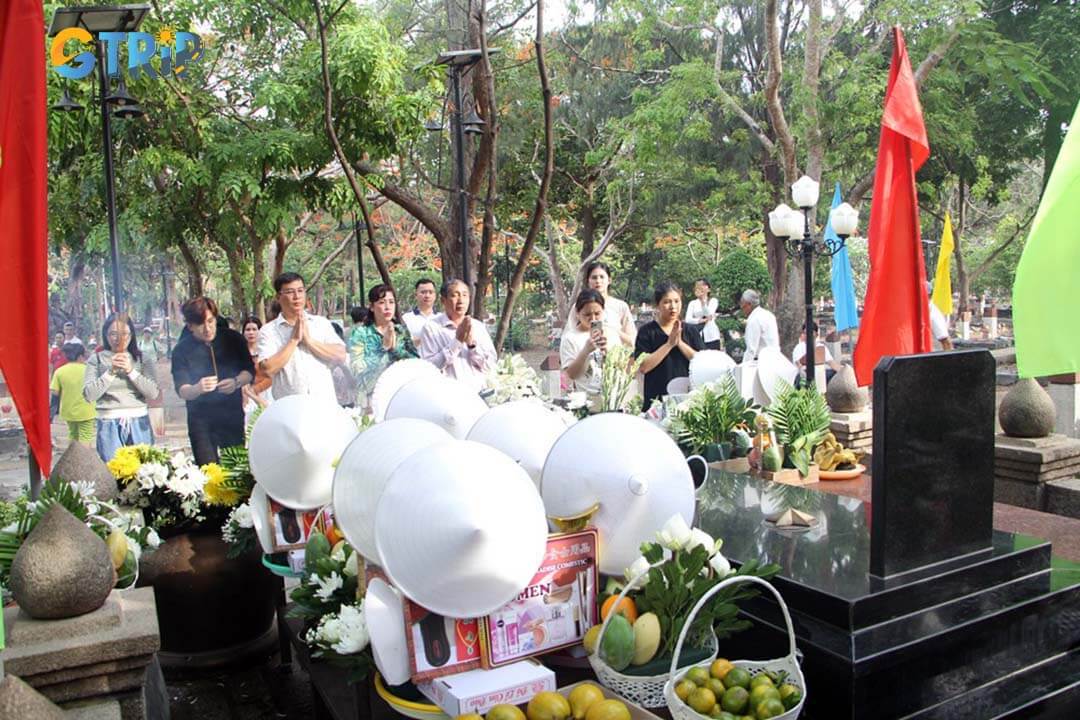
Many visit Hang Duong Cemetery at night, believing the spirits of fallen heroes are most present, creating a solemn and deeply spiritual atmosphere
Aside from visiting Hang Duong Cemetery, this season is also perfect for exploring other significant landmarks in Con Dao. The nearby Van Son Pagoda, located on a hillside, provides a peaceful retreat with panoramic views of the island. For those interested in ecotourism, Con Dao National Park offers lush tropical landscapes and diverse wildlife, making it an excellent addition to your itinerary.
How to get to Hang Duong Cemetery?
Hang Duong Cemetery is located on Con Dao Island, a remote yet historically significant destination in southern Vietnam. To reach this solemn site, travelers must first travel to Hang Duong Cemetery by getting to Con Dao and then navigating within the island.
1. Reaching Con Dao Island
The most convenient way to get to Con Dao is by air or sea:
- By air:
- The fastest way to reach Con Dao Island is by flying. Vietnam Airlines and Bamboo Airways operate direct flights from Ho Chi Minh City (SGN) and Can Tho (VCA) to Con Dao Airport (VCS). The flight takes around 45 minutes to 1 hour.
- If you’re traveling from Hanoi or Da Nang, you’ll need a connecting flight via Ho Chi Minh City or Can Tho.
- By ferry:
- For those preferring a scenic journey, ferries operate from Vung Tau and Soc Trang to Con Dao. The ferry ride from Tran De Port (Soc Trang) takes about 2 to 2.5 hours, while the Vung Tau ferry takes 4 to 5 hours. This option is more budget-friendly but depends on weather conditions.

Ferries from Vung Tau and Soc Trang offer a scenic, budget-friendly route to Con Dao, with travel times ranging from 2 to 5 hours
2. Getting to Hang Duong Cemetery from Con Dao Airport or port
Once you arrive on Con Dao Island, you have several transportation options to reach Hang Duong Cemetery, which is centrally located in Con Dao Town:
- Taxi: The most convenient option is taking a taxi from Con Dao Airport or Ben Dam Port. The ride takes about 15 minutes from the airport and around 25 minutes from the port.
- Motorbike rental: Renting a motorbike is a flexible way to explore Con Dao, including Hang Duong Cemetery and other landmarks like Bay Canh Island. Rental services are available at hotels and local shops for around 150,000-200,000 VND per day.
- Bicycle: If you prefer a leisurely ride, renting a bicycle is an eco-friendly option to reach the cemetery and nearby sites such as Dam Trau Beach. The ride from the town center takes about 20 minutes.
- Walking: If you’re staying in Con Dao Town, Hang Duong Cemetery is within walking distance from most accommodations.
Tips for visiting Hang Duong Cemetery
When visiting Hang Duong Cemetery, it is important to observe proper etiquette to honor the memory of those who rest there. This historic site holds deep significance, serving as the final resting place of many revolutionaries and war heroes. To ensure a respectful and meaningful visit, keep these key guidelines in mind.
- Respect the solemn atmosphere - Maintain silence and avoid loud conversations or disruptive behavior.
- Dress appropriately - Wear modest clothing, covering shoulders and knees, as a sign of respect.
- Follow cemetery rules - Do not touch or move offerings left by others at the gravesites.
- Visit during suitable hours - The cemetery is best visited in the early morning or evening when it is less crowded and the atmosphere is more serene.
- Bring incense and flowers - Offer incense and flowers at notable graves such as Vo Thi Sau’s tomb as a traditional way of paying respect.
- Be mindful of photography - Some areas may restrict photography, so always check before taking pictures.
- Avoid stepping on graves - Stick to designated paths to show reverence for the resting places of revolutionaries.
- Prepare for the weather - Bring water, sunscreen, or an umbrella, especially if visiting during the hotter months.

Observe proper etiquette at Hang Duong Cemetery by maintaining silence, dressing modestly, and respecting offerings and graves
FAQs when visiting at Hang Duong Cemetery
Hang Duong Cemetery honors revolutionaries and political prisoners who sacrificed for Vietnam’s independence. You come here to pay your respects and to reflect on the resilience and courage of those who endured immense hardships.
1. Is there an entrance fee to Hang Duong Cemetery?
Hang Duong Cemetery is open to the public, and there is no entrance fee required. As a national war memorial site, it is maintained for visitors to pay their respects to the fallen revolutionaries and understand Vietnam’s history. However, visitors should consider bringing offerings, such as incense or flowers, especially when visiting the grave of Vo Thi Sau, a revered national hero.
2. Can I visit Hang Duong Cemetery at night?
Yes, Hang Duong Cemetery is accessible at night, and many visitors choose to come after dark for spiritual or commemorative reasons. The site is particularly active around midnight, as locals believe this is a sacred time to honor the spirits of Vietnamese revolutionaries. If visiting at night, ensure you maintain a solemn attitude, dress appropriately, and avoid making loud noises.
Hang Duong Cemetery preserves the legacy of revolutionaries and war prisoners who sacrificed for Vietnam’s independence. Exploring this memorial site offers a deeper understanding of the resilience and courage of those who fought for freedom. From visiting the tomb of Vo Thi Sau to paying respect at the graves of notable revolutionaries, each moment spent here is a solemn reminder of Vietnam’s past. GTrip - Vietnam Travel Agency offers curated tours to explore Con Dao's historic landmarks. Plan your journey and uncover more about Vietnam’s rich heritage.

